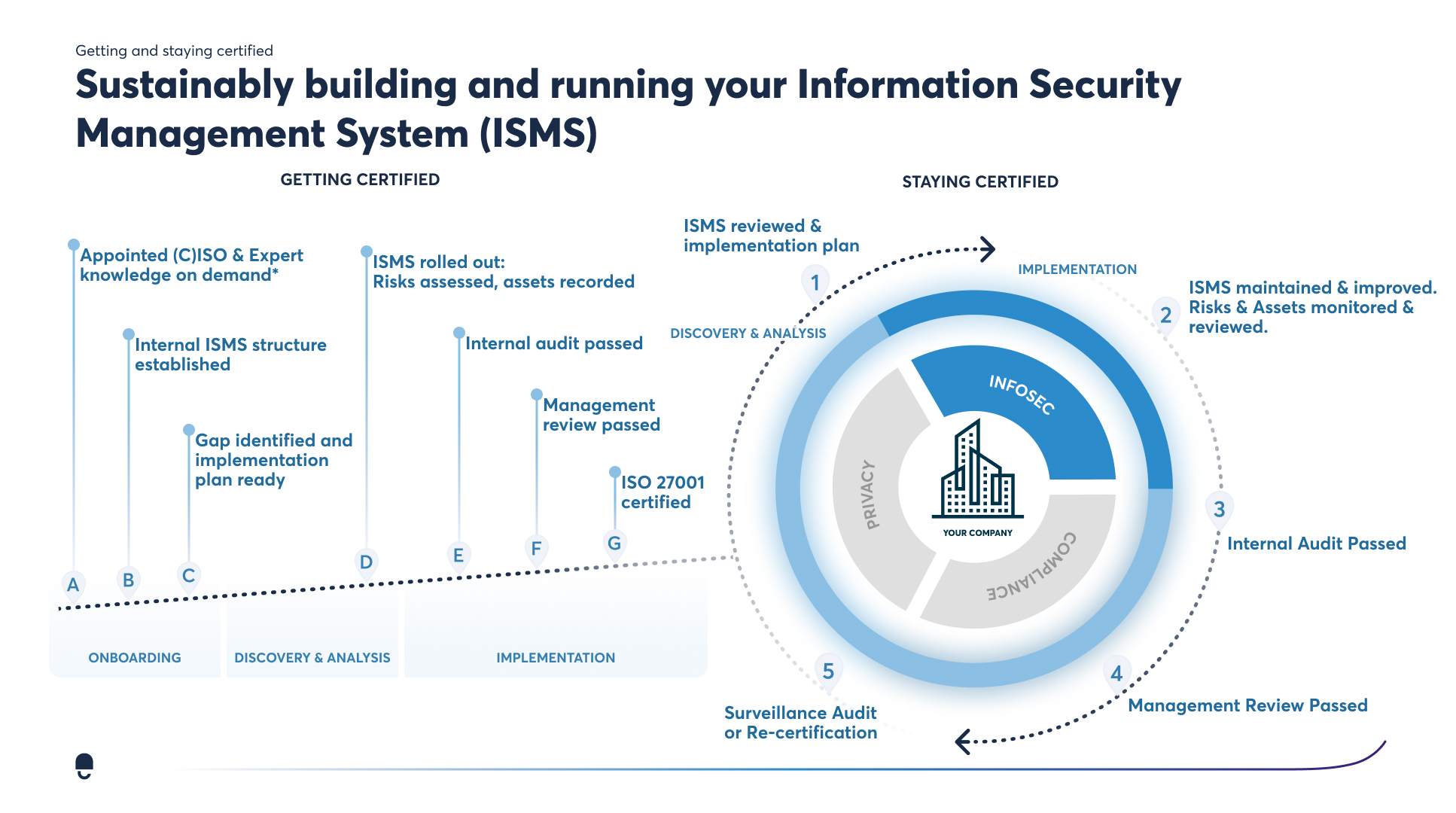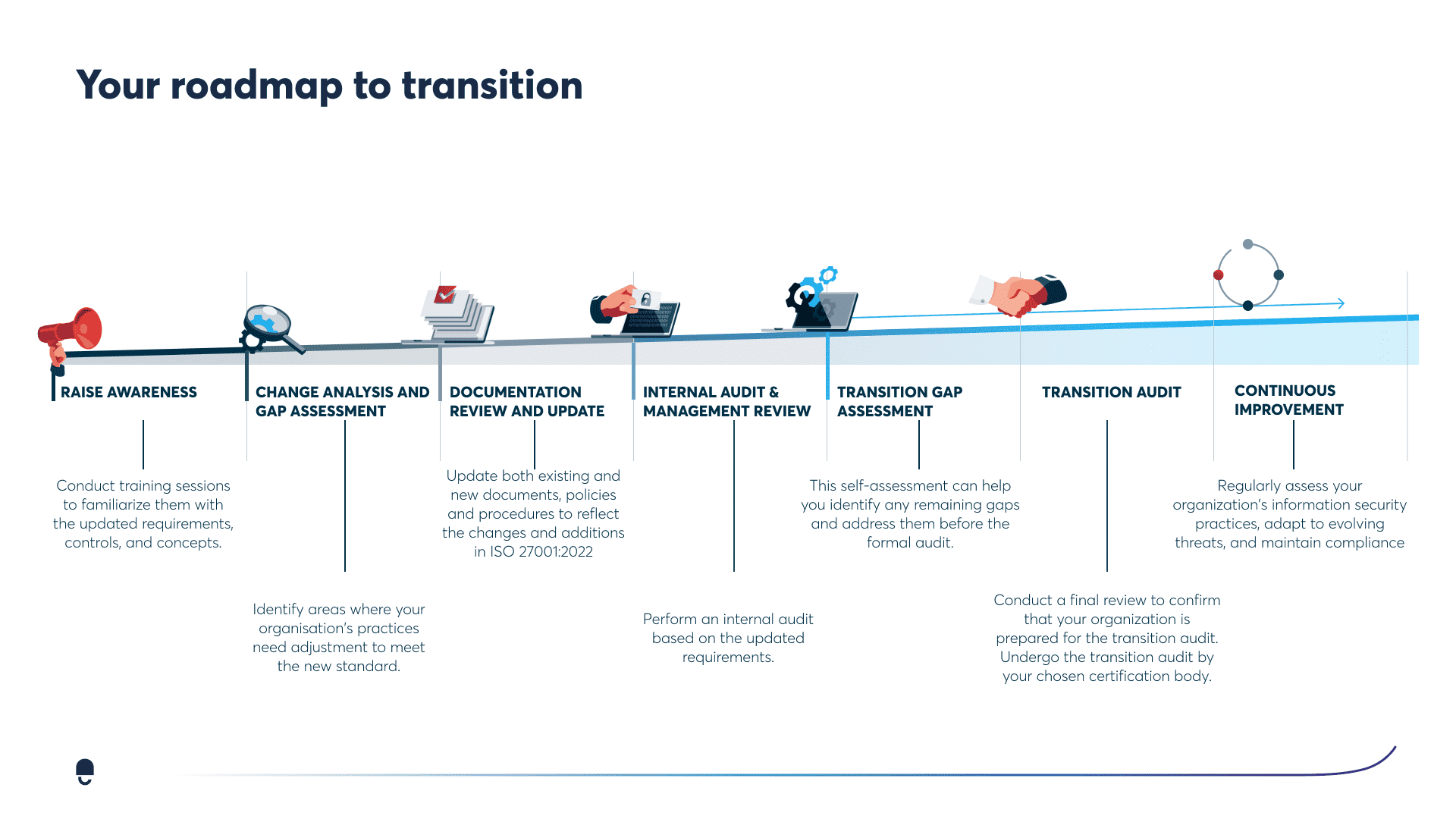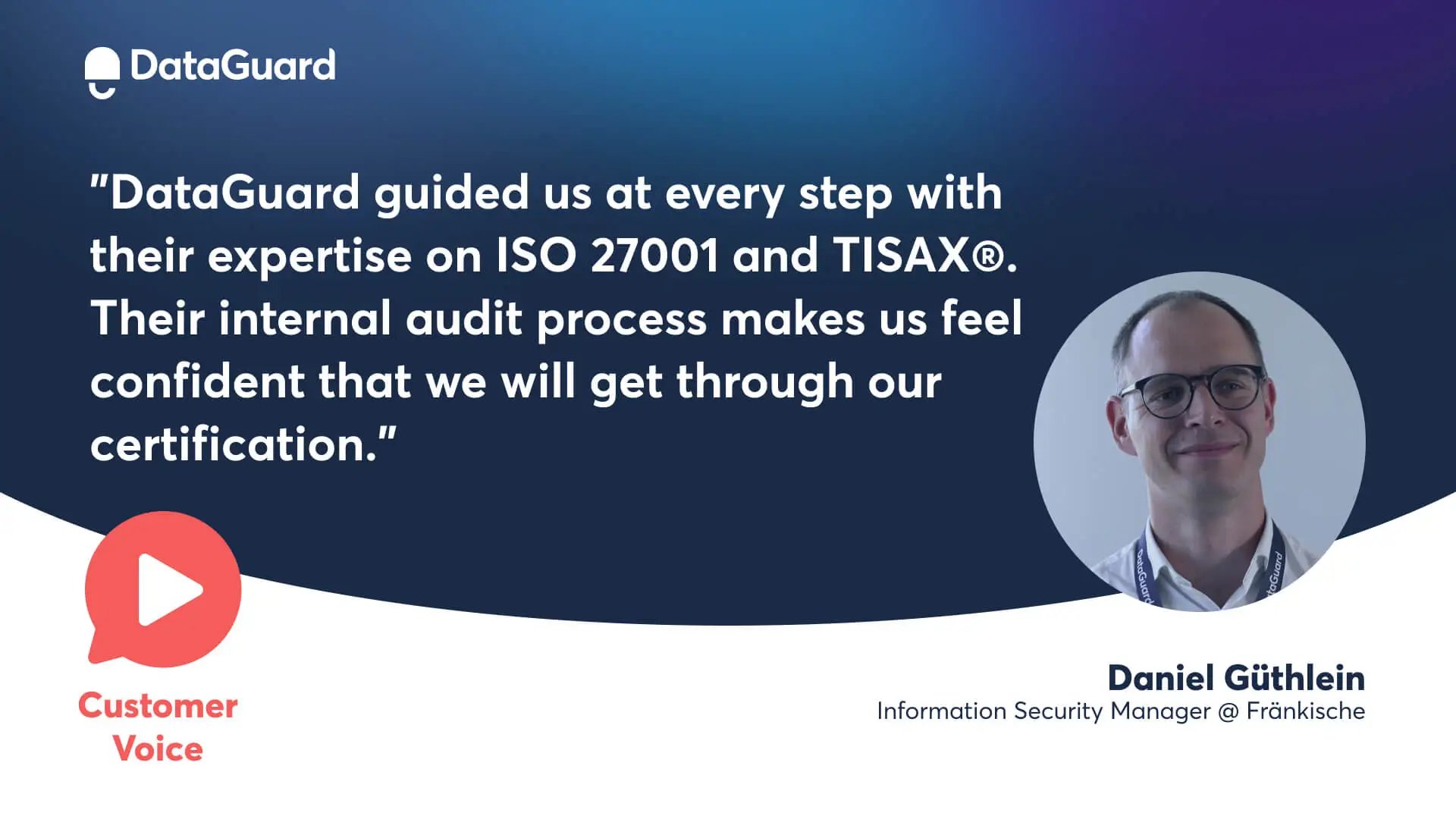An auditor will come to your company premises, review your ISMS, and speak with your employees.
Here’s the overall process:
1. Document check
First, the external auditor will review all of your ISMS-related documentation. It has now also become the norm that auditors can do this remotely. But in fact, inviting them to physically come into your company so they can get to know your team builds trust early on.
2. On-site audit
In the second step, an on-site inspection is carried out. Some of your employees will be interviewed, and your systems will also be randomly checked. In addition to employees such as your CISO/ISB, who directly deal with the ISMS, your CFO or CEO should give the auditor confidence that the financial resources for operating the ISMS are firmly set up.
You will already know during the inspection whether you’re going to pass the audit and receive the certification, as the auditor will directly address minor and perhaps even significant issues.
Afterwards, the certification body first has to prove all non-conformities addressed by the auditor, which usually gives you the chance to improve your documentation before an official result of the audit is confirmed..
Major non-conformance will lead to a failed audit. The only thing left is to set the date and conditions for a follow-up audit together.
3. Audit Report and ISO 27001 Certificate
Finally, you will receive an audit report and the certificate from your auditor. Many certification companies are currently busy, so this may take a few months.



%20.webp?width=1600&height=400&name=Definition%20of%20the%20scope%20of%20application%20of%20the%20ISMS%20(Information%20Security%20Management%20System)%20.webp)



